A daring concept born from desperation: At the end of the war, Nazi Germany desperately needed new, essentially technological ways to deal with the allied steamroller, on land, air and sea. This led to an engineering fest of epic proportion, spawning some of the most amazing and advanced projects and ideas ever seen. Some were impractical, other were so advanced that they were realized twenty to fifty years afterwards. Although there are tons of records for advanced missiles, rockets, and jet planes, naval concepts were fewer in between but no less exciting to consider.
German naval secret weapons
The most advanced of these “secret weapons” was of course the superfast submarine, originally to be powered by an advanced closed loop propulsion (Walter system). But as researches dragged on, a cut was made by Albert Speer leading to the mass-production Type XXI to be propelled by a hybrid system, combining conventional diesels with twice as many batteries to double the underwater speed, a brand new streamlined hull, and snorkel. Interesting also were the mass-built mini-subs Delphin, Hecht (53), Seehund (138), Biber (324), Molch (393), human torpedoes like the Neger class (100), Marder (500) and Hai (the only prototype of a Marder enlarged by 36 meters).
German researches on hydrofoils
But one of the most amazing project of that era of 1944-45 was the array of fast surface ships using jets, catamaran hulls, or hydrofoils. Hans von Schertel worked before and during the war on many such prototypes and paper projects aimed at replacing the traditional S-boote and R-boote. The idea was such kind of ship were so fast they could not be destroyed, either for launching torpedoes or laying mines.
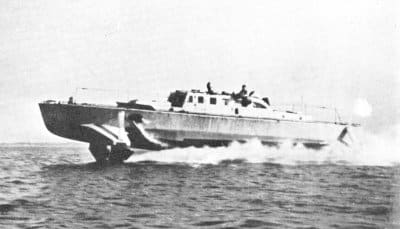
VS 6
Attack Hydrofoil VS 6
These innovative fast attack crafts were the brainchild of Baron Hanns von Schertel, and realized by shipbuilder Sachsenberg. The prototype was tested in 1941. It was a 17-ton vessel, capable of 47 knots (80 kph) and laying mines. 52.5 feet in length, it was powered by two Hispano-Suiza gasoline engines of 560 hp each.
The Tietjens VS-7 followed, this time designed by Oscar Tietjens. It was largely based on a 1932 prototype with a patented surface-piercing hoop foil system, tested with success in the USA. The light vessel was able to reach 25 mph with a 5 hp outboard engine. The VS-7 largely emulated the previous VS-6, built at Schleswig, Germany, Vertens Yacht Yard. Also 17 tons, about the same specs, but fitted with these revolutionary hoop foils. It was tried and reached a blazing 55 knots (101 kph) but was found slow to accelerate and had poor handling and maneuverability.
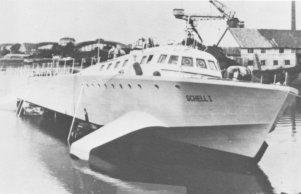
VS 8
Transport Hydrofoil VS 8
One of the most remarkable project of the time was the fast transport VS 8, which could carry and land a light tank Type 38T up to a Panzer IV, stored on a tailored back deck, which was flooded as the self-propelled pontoon reached the beach (two 40 hp engines) with its load, in less than two minutes. This vessel was propelled by a 1800 hp Mercedes Benz diesel, not up to the task.
Other applications has been as an fast minelayer with 15-20 mines. The VS8, ordered in 1940 was commissioned on 01.03.1943 but was found underpowered and the project was dropped after September 1944 total engine failure and failed rescue, apparently also a casualty due to sabotage. The VS9 ordered in 1941 was never started.
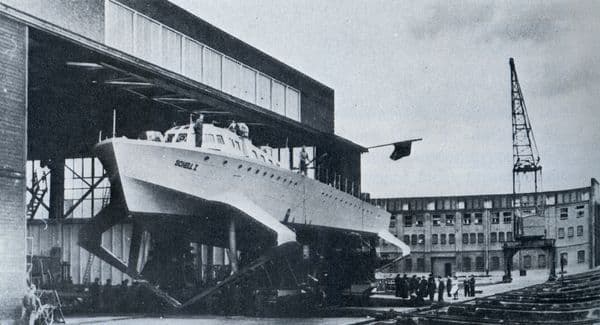
Hydrofoil “VS 8” at Sachsenber-Shipyard- Picture from Fock Schnellboote Vol. 2
The following VS-10 was even larger, at 46-tons, 92 feets long, 60 knots and torpedo-carrying. The prototype was completed and made ready for launch but completely destroyed in an air raid just a few days before it could happen.
The final TR5b or TRAGFLÜGELBOOT was probably the most advanced of all these. It combined to a rather conventional hull twin turbojets Jumo 004s or He S 011s and three VS-type foils which housed the propellers. That way, the propellers helped reaching the final attack phase, and to escape. Tests were performed in 1944 with a radio-controlled jet powered boat, the Tornado, which showed calm sea was required. K-Verband once planned the building start in early 1945, only to cancel it as low priority compared to more immediately useful and simpler vessels.

Size comparison with a German SdKfz.234 reconnaissance car

Reconstruction in what-if camouflage
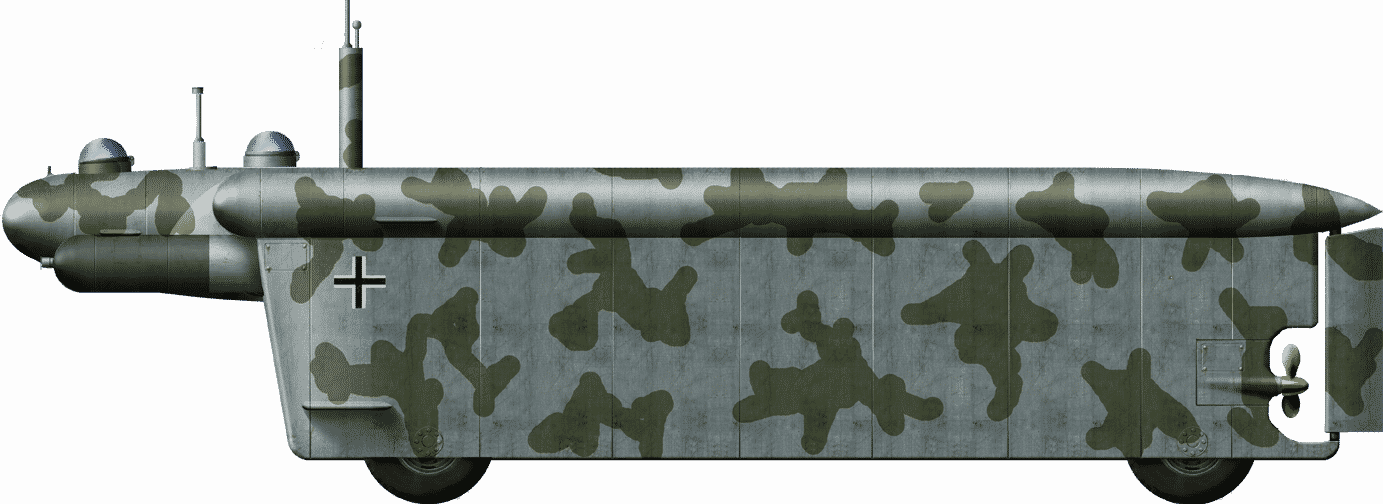
Second fictional livery, with periscopes up
UGS Manta: Origins
The Manta was an even more extreme prototype, that found its origins in the collaboration between the Walter facility and Versuchskommando 456. Named Untersee-Gleitflächen-Schnellboot Manta or UGS Manta, it was driven by the limitations of midget submarines, speed and range limitations, and the drag caused by the torpedoes when underwater. The obvious solution was to have these in the air instead, meaning this was to led to a completely new type of craft.
The Manta which resulted from these researches looks stunning in its radical aproach, and the only possible comparison were the 1960-1980s Ekranoplanes series built for the Soviet Navy. Indeed, that kind of hybrid between a plane and a ship used a well-known fluid property, the “wing-in-ground effect”, which allowed for a very large plane (the “Caspian Monster” remains the largest “plane” ever built in that occurrence), much longer than the 747, C5 Galaxy or Antonov An-225 Mriya at 92.00 m (301 ft 10 in) and heavier at 240 tons. A small serie of operational anti-ship and landing versions were operational in the 1980s and we will dig soon into these interesting crafts.
General description
The Manta only used this effect when in surface to lower drag at its minimum, thanks to a trimaran configuration: Three cylindrical hulls and large vertical keels/tanks that captured the air flow under the main wing when up. However the acronym is loosely translated as “Submarine sliding speedboat”, in fact these were indeed submarines unlike the Soviet Ekranoplanes, and only raised above the surface thanks to the keel/tanks that provided buoyancy. When above water (final phase of the attack), the Manta could reach 50 knots (93 kph) which made it difficult to hit, in addition presenting a rather hollow frontal target. It can then launch up to eight torpedoes.
Design
Basically the Manta was made of three tube-like hulls linked by a main wing and two vertical keels. The central tube was housing the two-men crew cabin (each had a bubble-like canopy) and contained the diesel-electric propulsion and diesel-hydraulic transmission to link these to the lower keels propeller. The outer cylinders are Schwertwal-I type, but with the batteries, fuel tanks filled with Ingolin, trim tanks and compensating tanks. The wing was divided into an upper and lower part and sandwiched in between were located the tow to eight torpedoes, or 8 TMA or 12 TMB mines. These were the same as the rest of the midget submarine fleet, aviation type, 450 mm in diameter, or the larger marine type (four carried). mines. They could also carry 4 “projectiles”* which are not precisely described but would have been likely heavy rockets.
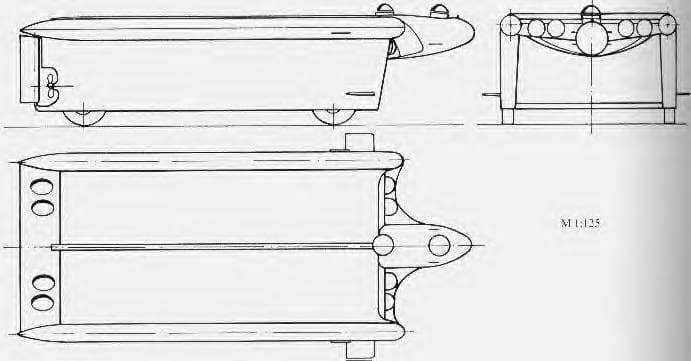
Three-view drawing of the Manta, from the model.
The Manta was about 15 m long, 6 m wide, with 1.5 m diameter cylinders, and weighted 15 tons empty/ 50 tons loaded. This was compensated by two 600 hp engines or 800 hp Walter turbines coupled with 440 Kw electric motors. The maximum surface speed was noted as 50 kts, the maximum submerged speed: 30 kts (55 kph) which was impressive enough. Range was 200 nm @50 kts/600 nm @20 kts on the surface, and 120 nm @30 kts/500 nm @10 kts when submerged.
Navigation equipment was similar to that of the Schwertwal, and safety equipment was well-thought with marker buoy with an antenna, self-inflating dinghy and special diving suits. In addition, the crew could jettison the two very heavy electric batteries from the keels, providing extra buoyancy, and helping the craft when submerged, to reach more easily the surface in emergency.
When surfacing, the propulsion mode is even more exotic you can think: With less drag, the speed was to be in excess of 90 kph and the keels where not even supposed to surf, but to roll over the waves thanks to four encased massive aviation wheels. This way, the drag was even more limited and at that speed the water surface was hard enough for the Manta to roll over. For extra lift there were two extra pairs of foils, for and aft of the keels before the wheels took over.
The ultimate naval V-weapon
The Manta was a submarine/flying/fast attack craft way ahead of its time. In fact, it left the paper phase, but only for a small mockup model stage. All documents produced after the Kleinst-U-Bootwaffe (Miniature Submarine Command) blessed this project has been burnt. Only the model remained, which was used to draw 3-view blueprints after the war.
Would those had been built in numbers prior to June 1944, they could have disable or destroy many allied ships assembled at the D-Day landings. Only AA anti-artillery would have been fast enough to catch these when surfaced, provided they had the right depression. Does this idea still means something today ? The Russian Ekranoplanes are mothballed, FAC hydrofoils has been retired for the most as well as hovercrafts that are known gas-guzzlers. This kind of submarine/wing-in-ground craft was only meant to deal the enemy with torpedoes, that is too dangerously close to be safe when modern sensors/radars can spot you early on, and when missiles and deadly accurate 57 to 120 mm fast to 30 mm CIWS superfast cannons (Phalanx-type) are aiming at you.
However the same concept applied to a missile-launching craft is much more appealing. Indeed, these could approach the enemy’s inner radar/outer sonar detection limits and try a saturation fire after surfacing. The enemy ships could have quickly fired back missiles and destroy the bogeys, but MACH 3 missiles in large numbers within reach would had left little time to respond, especially if the attacking crafts are coated and stealthy shaped.
| UGS Specifications | |
| Dimensions | 15 x6 m, hull diam. 1.5 m |
| Displacement | 15 – 50t FL |
| Crew | 2 |
| Propulsion | 2 props, 2x 600 hp diesels, 2x 440 Kw elect. mot. |
| Speed | 50 knots/sub 30 knots (90 km/h; 55 mph) |
| Range | 200 nm @50 kts/600 nm @20 kts, 500 nm @10 kts sub |
| Diving depth | 50-60 m |
| Armament | 2-8 Torpedoes or 8/12 TMA/TMB mines or 4 rockets |
Sources, Links
http://www.german-navy.de/kriegsmarine/ships/landingcrafts/vs8/
http://www.german-navy.de/kriegsmarine/ships/fastattack/tb5/index.html
http://strangevehicles.greyfalcon.us/TR.htm
http://strangevehicles.greyfalcon.us/Manta.htm
http://www.foils.org/trag.htm
http://www.self.gutenberg.org/article/WHEBN0022555488/K-Verband
http://www.ebay.com/itm/Choroszy-Models-1-72-MANTA-TORPEDO-UGS-BOAT-Untersee-Gleitflachen-Schnellboot-/361024778094


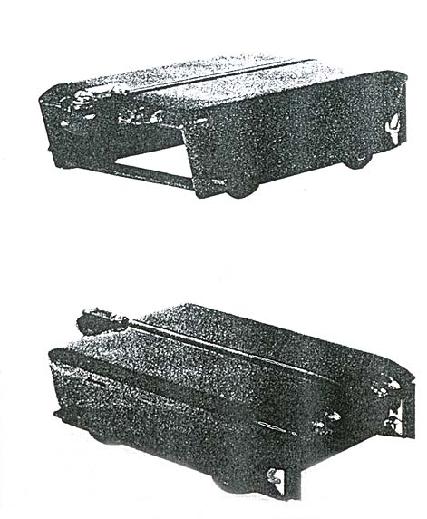
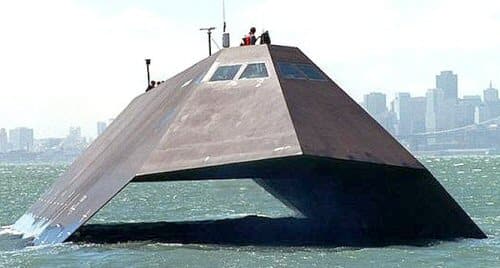
 Latest Facebook Entry -
Latest Facebook Entry -  X(Tweeter) Naval Encyclopedia's deck archive
X(Tweeter) Naval Encyclopedia's deck archive Instagram (@navalencyc)
Instagram (@navalencyc)





 French Navy
French Navy Royal Navy
Royal Navy Russian Navy
Russian Navy Armada Espanola
Armada Espanola Austrian Navy
Austrian Navy K.u.K. Kriegsmarine
K.u.K. Kriegsmarine Dansk Marine
Dansk Marine Nautiko Hellenon
Nautiko Hellenon Koninklije Marine 1870
Koninklije Marine 1870 Marinha do Brasil
Marinha do Brasil Osmanlı Donanması
Osmanlı Donanması Marina Do Peru
Marina Do Peru Marinha do Portugal
Marinha do Portugal Regia Marina 1870
Regia Marina 1870 Nihhon Kaigun 1870
Nihhon Kaigun 1870 Preußische Marine 1870
Preußische Marine 1870 Russkiy Flot 1870
Russkiy Flot 1870 Svenska marinen
Svenska marinen Søværnet
Søværnet Union Navy
Union Navy Confederate Navy
Confederate Navy Armada de Argentina
Armada de Argentina Imperial Chinese Navy
Imperial Chinese Navy Marinha do Portugal
Marinha do Portugal Mexico
Mexico Kaiserliche Marine
Kaiserliche Marine 1898 US Navy
1898 US Navy Sovietskiy Flot
Sovietskiy Flot Royal Canadian Navy
Royal Canadian Navy Royal Australian Navy
Royal Australian Navy RNZN Fleet
RNZN Fleet Chinese Navy 1937
Chinese Navy 1937 Kriegsmarine
Kriegsmarine Chilean Navy
Chilean Navy Danish Navy
Danish Navy Finnish Navy
Finnish Navy Hellenic Navy
Hellenic Navy Polish Navy
Polish Navy Romanian Navy
Romanian Navy Turkish Navy
Turkish Navy Royal Yugoslav Navy
Royal Yugoslav Navy Royal Thai Navy
Royal Thai Navy Minor Navies
Minor Navies Albania
Albania Austria
Austria Belgium
Belgium Columbia
Columbia Costa Rica
Costa Rica Cuba
Cuba Czechoslovakia
Czechoslovakia Dominican Republic
Dominican Republic Haiti
Haiti Hungary
Hungary Honduras
Honduras Estonia
Estonia Iceland
Iceland Eire
Eire Equador
Equador Iran
Iran Iraq
Iraq Latvia
Latvia Liberia
Liberia Lithuania
Lithuania Mandchukuo
Mandchukuo Morocco
Morocco Nicaragua
Nicaragua Persia
Persia San Salvador
San Salvador Sarawak
Sarawak Uruguay
Uruguay Venezuela
Venezuela Zanzibar
Zanzibar Warsaw Pact Navies
Warsaw Pact Navies Bulgaria
Bulgaria Hungary
Hungary

 Bundesmarine
Bundesmarine Dutch Navy
Dutch Navy Hellenic Navy
Hellenic Navy Marina Militare
Marina Militare Yugoslav Navy
Yugoslav Navy Chinese Navy
Chinese Navy Indian Navy
Indian Navy Indonesian Navy
Indonesian Navy JMSDF
JMSDF North Korean Navy
North Korean Navy Pakistani Navy
Pakistani Navy Philippines Navy
Philippines Navy ROKN
ROKN Rep. of Singapore Navy
Rep. of Singapore Navy Taiwanese Navy
Taiwanese Navy IDF Navy
IDF Navy Saudi Navy
Saudi Navy Royal New Zealand Navy
Royal New Zealand Navy Egyptian Navy
Egyptian Navy South African Navy
South African Navy






























 Ukrainian Navy
Ukrainian Navy dbodesign
dbodesign